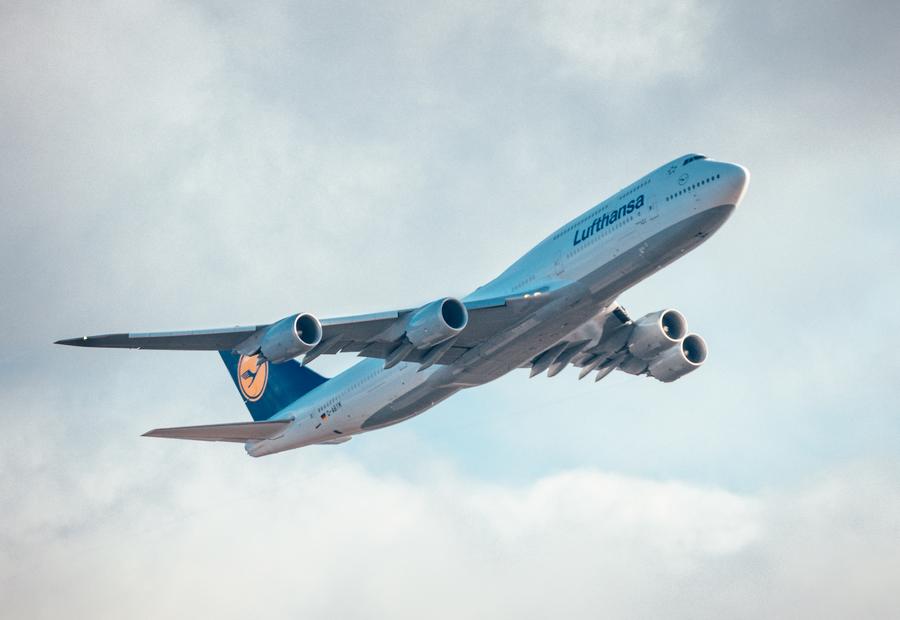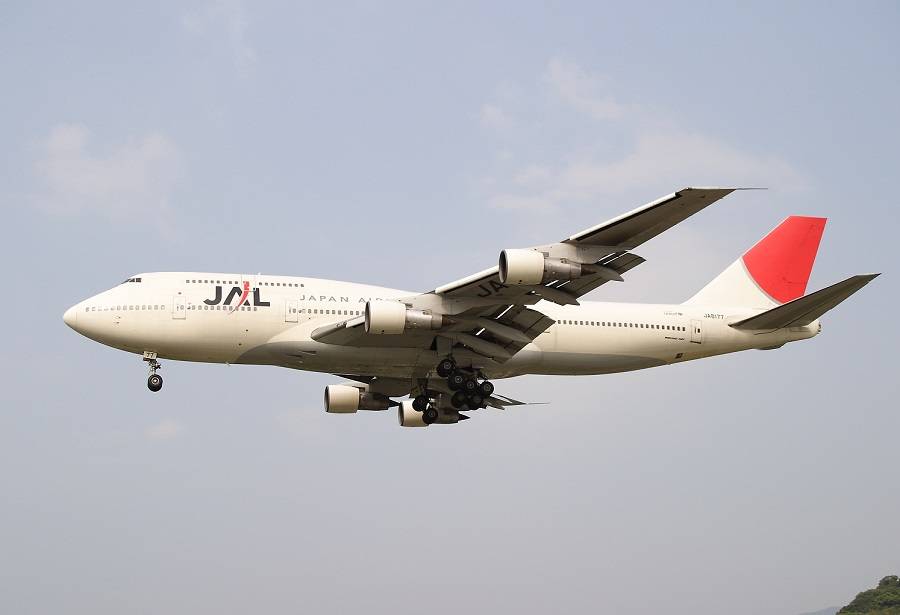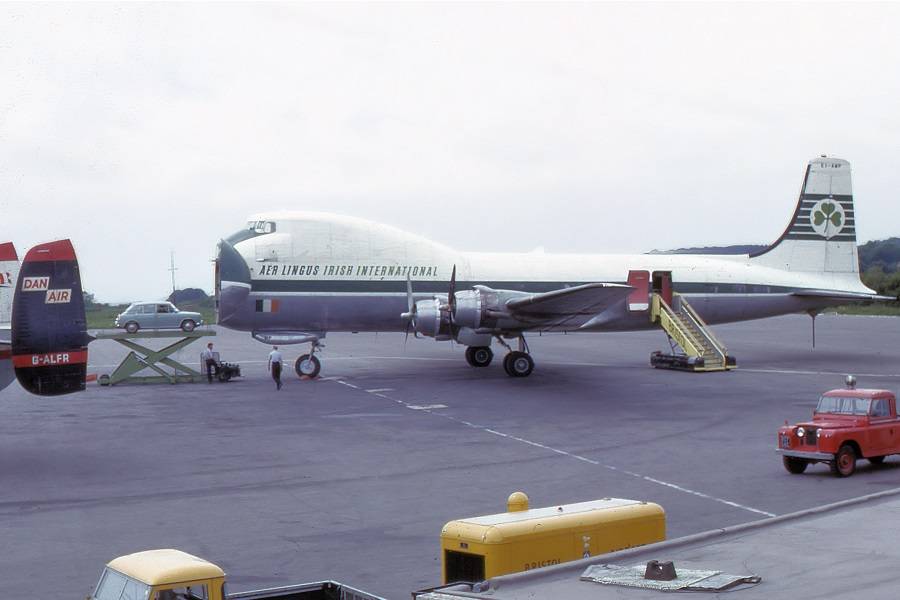The iconic hump of the 747 distinguishes it from [almost] all aircraft. But there are some key “hump facts” that not all aviation fans know!
It’s a frustrating topic, whenever an avgeek (such as yours truly) tries to engage a non-avgeek in an aviation discussion. The all-mighty Concorde excluded, all airliners look the same. They all have a tubular body, two or four engines, usually under the wings. OK, some have them in the rear, either side of a ‘T’-tail. Ho-hum, who cares.

But there is another exception to the above. Avgeek or not, nobody can miss the distinctive upper-deck hump of the 747 family! From a photo lacking in other items for scale, someone could confuse an A220 with a 787. But there is no confusing Boeing’s Jumbo with anything else. So let’s list a few things about this plane’s most distinctive feature.
Which 747 Got The Long Hump First?
Most avgeeks know the basic facts around the plane’s design. Firstly, the hump and high cockpit position of the 747 had to do with its dual role, as a cargo plane. This was back when Boeing and everyone else thought that all passenger jets would eventually go the supersonic route. Existing planes can’t get the front cargo door as a retrofit. But Boeing wanted to ensure that the production line would still have a purpose. And thus, the high cockpit, upper deck and the hump were born!

Obviously, the hump of the 747 evolved, through the model range. The first models (747-100 and -200) only had the shorter upper deck. But here’s the first factoid about the hump that you may not know: the 747-400 was NOT the first variant to have the longer upper deck. That accolade goes to the rarer 747-300 (see above).
The -300 was an intermediate 747 variant with the long hump, plus the option of GE’s CF6-80C2 engines, which would later equip many 747-400s. However, it still retained many features of the original, including the three-person cockpit. Sales weren’t too bad, but Boeing quickly started offering the -400. And the new variant’s 2-person cockpit was a key selling point.

747SP: The Enabler?
But there is another 747 variant that played a key role in the evolution of the hump. And that’s despite the fact that outwardly, it seems to have the same upper deck as early models! This was the even rarer 747SP. It was a shortened variant of the 747-100, whose role was to allow very long routes. But in shortening the fuselage, Boeing had to ‘mate’ the hump with the central wing-box section. So having done that for the SP, Boeing thought: why not do that for the other 747s?

The 747SP didn’t sell all that well, but given its niche role, this wasn’t surprising. Later on, Boeing actually considered making an SP-like 747-400 variant, that it called ‘Advanced Short Body’ (ASP). But by then, the 777 was in the works and it had the range to do those long routes. However, the SP paved the way for the long 747 hump to feature on the 747-300/400s.
747 Hump Conversions
But while the 747-300 was the first variant with the long upper deck, it and the -400 weren’t the only ones to have it. Boeing actually offered the longer hump to existing 747 users, as a conversion! Yes, a small number (12) of 747-200s got the Stretched Upper Deck (SUD) configuration as a retrofit. Ten of these belonged to KLM, all of them 747-200M (Combi) models.

The modification changed the emergency exit configuration of the aircraft. UTA in France also got SUD retrofits for two of its 747-200s – also Combi models. But contrary to some sources, Japan Airlines did not convert two of its 747 double-deckers with the long hump. Rather, JAL ordered its jets with it!
An Efficiency Matter
These jets were 747-100 high-density, short-range models (747-100BSR) that got the SUD configuration from the factory. But no, this doesn’t mean that the 747-100 was the first ‘long-hump’ variant. JAL’s two 747-100BSR-SUD models were late deliveries, entering service in 1986, i.e. about two years after the 747-300 did. So the latter was the first stretched upper deck variant to carry passengers.

Another aspect of the longer 747 hump is that it actually made these planes more aerodynamic – by accident! These jets conform a bit better to the area rule. This is because the rear of the hump overlaps the wing root. In plain English, the hump allowed these jets (AND the SP) to cruise at Mach 0.85, instead of 0.84. Not an earth-shattering difference but interesting, considering that the long hump also makes the planes a bit heavier. And that extra weight, by the way, is why cargo 747-400s and 747-8s have the short hump.
A Plane With a Hump Before The 747
Finally, a couple of bonus factoids. Firstly, the 747 wasn’t quite the first airliner to have an upper deck with a hump. That honour went to the weird and wonderful ATL-98 Carvair. We have previously looked in detail at this DC-4 conversion, here. But in essence, its upper cockpit and layout have the same ultimate purpose as the 747’s: cargo. These planes would ferry cars across the English Channel (and the Irish Sea) in the early 60s, later assuming more roles.

Secondly, you may occasionally see a picture of a 747 with a short hump, a nose door AND passenger windows. We know that all cargo 747s have the shorter upper deck because they don’t need the big one. We also know that, sadly, it isn’t possible to convert passenger 747s with that front, upwards-hinging door. Had this been possible, it could have saved a lot of 747s getting scrapped today.
About That Front Door…
But if it’s not possible to retrofit the front cargo door, how do these passenger 747s (see below) have it? The answer is because they all are 747-200C “Convertible” models. Somewhat confusingly, Boeing made both a -200 Combi version (747-200M) and a Convertible version, which is the ‘C’ model. Both can carry combinations of passengers and cargo, but only the Convertible has that front door. It seems that Boeing only made 13 747-200C models.

Sadly, the production of the mighty Jumbo is stopping later this year. But the 747 hump will remain in the skies for many years to come. Who knows, the need to carry oversize cargo could give us a similar design in the future. But until then (and with those Carvairs long gone), the distinctive shape of the Jumbo Jet will be with us.



